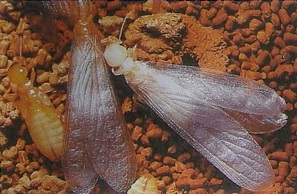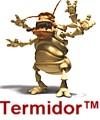 Winged termites
Winged termites
Termite Treatment Rodent Melbourne
Often the first sign of a termite infestation is the sudden appearance of winged termites, ushering in the beginning of termite “swarming” season. Termites swarm in order to start new colonies within a building. These swarms can frighten homeowners, especially those unaware that their home has a termite problem. There are several simple signs of termite infestation that every homeowner should know in order to detect and prevent the establishment of new termite colonies in their home.





